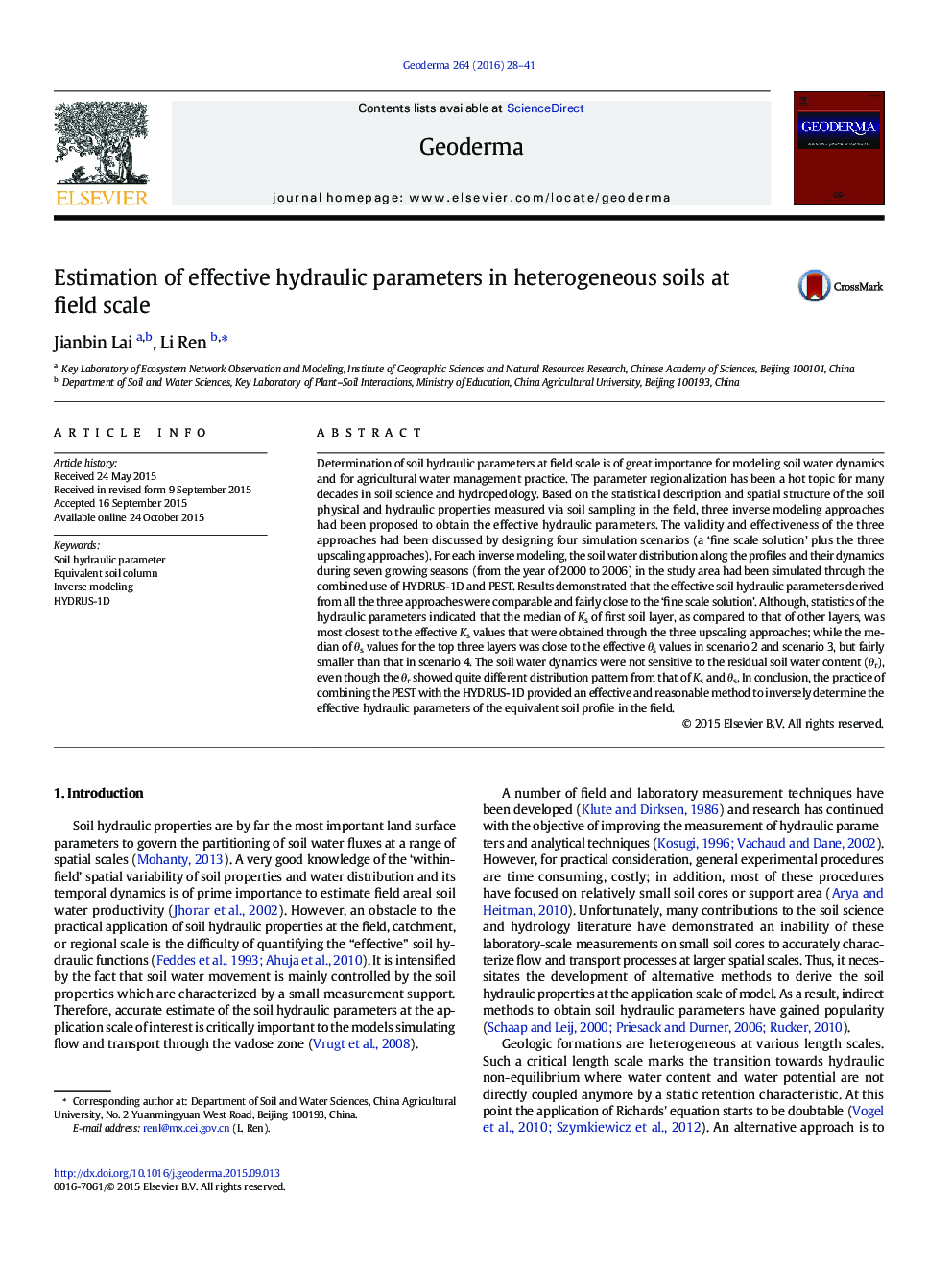| کد مقاله | کد نشریه | سال انتشار | مقاله انگلیسی | نسخه تمام متن |
|---|---|---|---|---|
| 4573080 | 1332418 | 2016 | 14 صفحه PDF | دانلود رایگان |
• Three upscaling methods had been proposed to get soil effective hydraulic parameters.
• PEST could combine with the HYDRUS-1D to inversely determine the effective hydraulic parameters at the field scale.
• The median of Ks values of first soil layer was most closest to the effective Ks values.
Determination of soil hydraulic parameters at field scale is of great importance for modeling soil water dynamics and for agricultural water management practice. The parameter regionalization has been a hot topic for many decades in soil science and hydropedology. Based on the statistical description and spatial structure of the soil physical and hydraulic properties measured via soil sampling in the field, three inverse modeling approaches had been proposed to obtain the effective hydraulic parameters. The validity and effectiveness of the three approaches had been discussed by designing four simulation scenarios (a ‘fine scale solution’ plus the three upscaling approaches). For each inverse modeling, the soil water distribution along the profiles and their dynamics during seven growing seasons (from the year of 2000 to 2006) in the study area had been simulated through the combined use of HYDRUS-1D and PEST. Results demonstrated that the effective soil hydraulic parameters derived from all the three approaches were comparable and fairly close to the ‘fine scale solution’. Although, statistics of the hydraulic parameters indicated that the median of Ks of first soil layer, as compared to that of other layers, was most closest to the effective Ks values that were obtained through the three upscaling approaches; while the median of θs values for the top three layers was close to the effective θs values in scenario 2 and scenario 3, but fairly smaller than that in scenario 4. The soil water dynamics were not sensitive to the residual soil water content (θr), even though the θr showed quite different distribution pattern from that of Ks and θs. In conclusion, the practice of combining the PEST with the HYDRUS-1D provided an effective and reasonable method to inversely determine the effective hydraulic parameters of the equivalent soil profile in the field.
Journal: Geoderma - Volume 264, Part A, 15 February 2016, Pages 28–41
